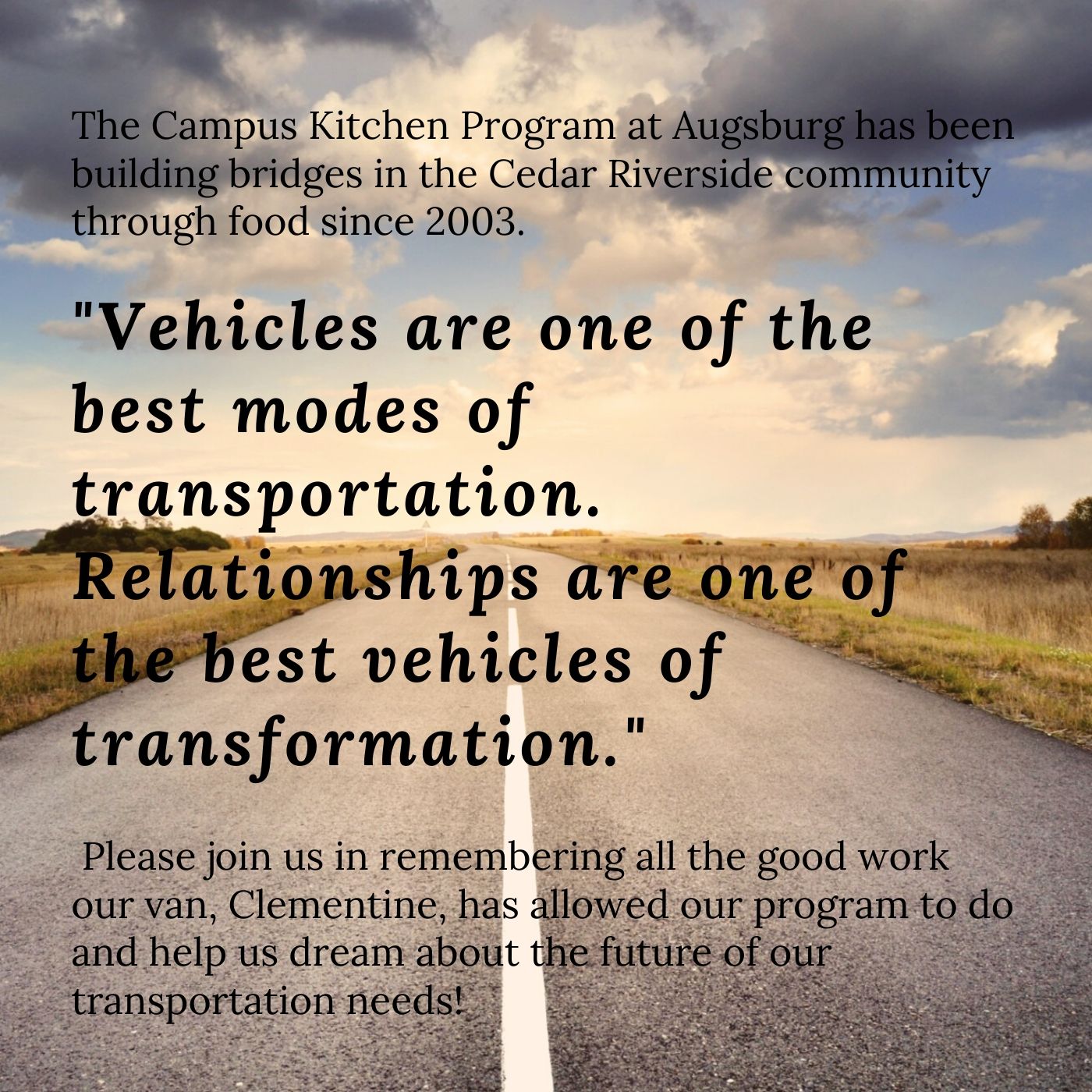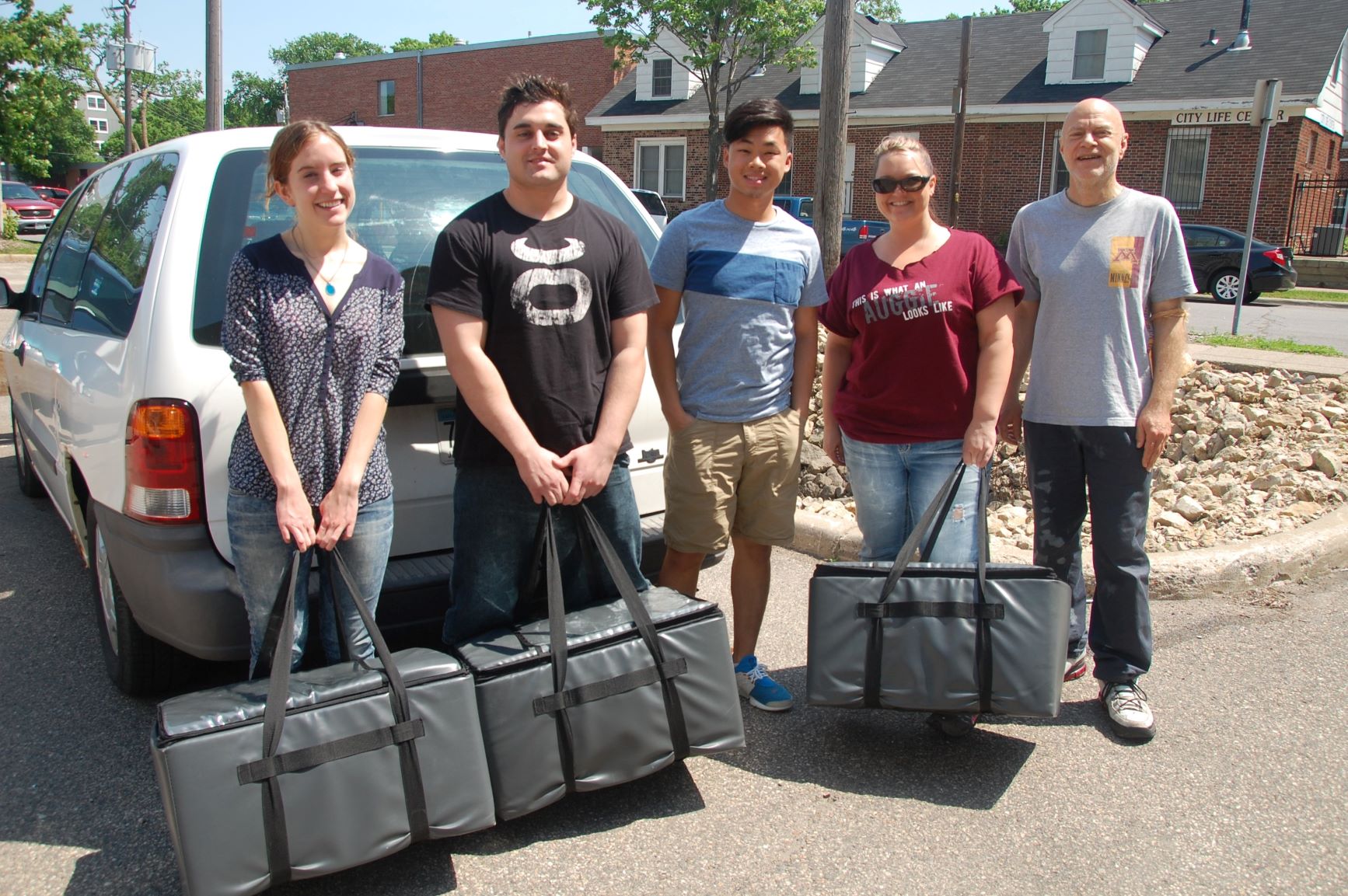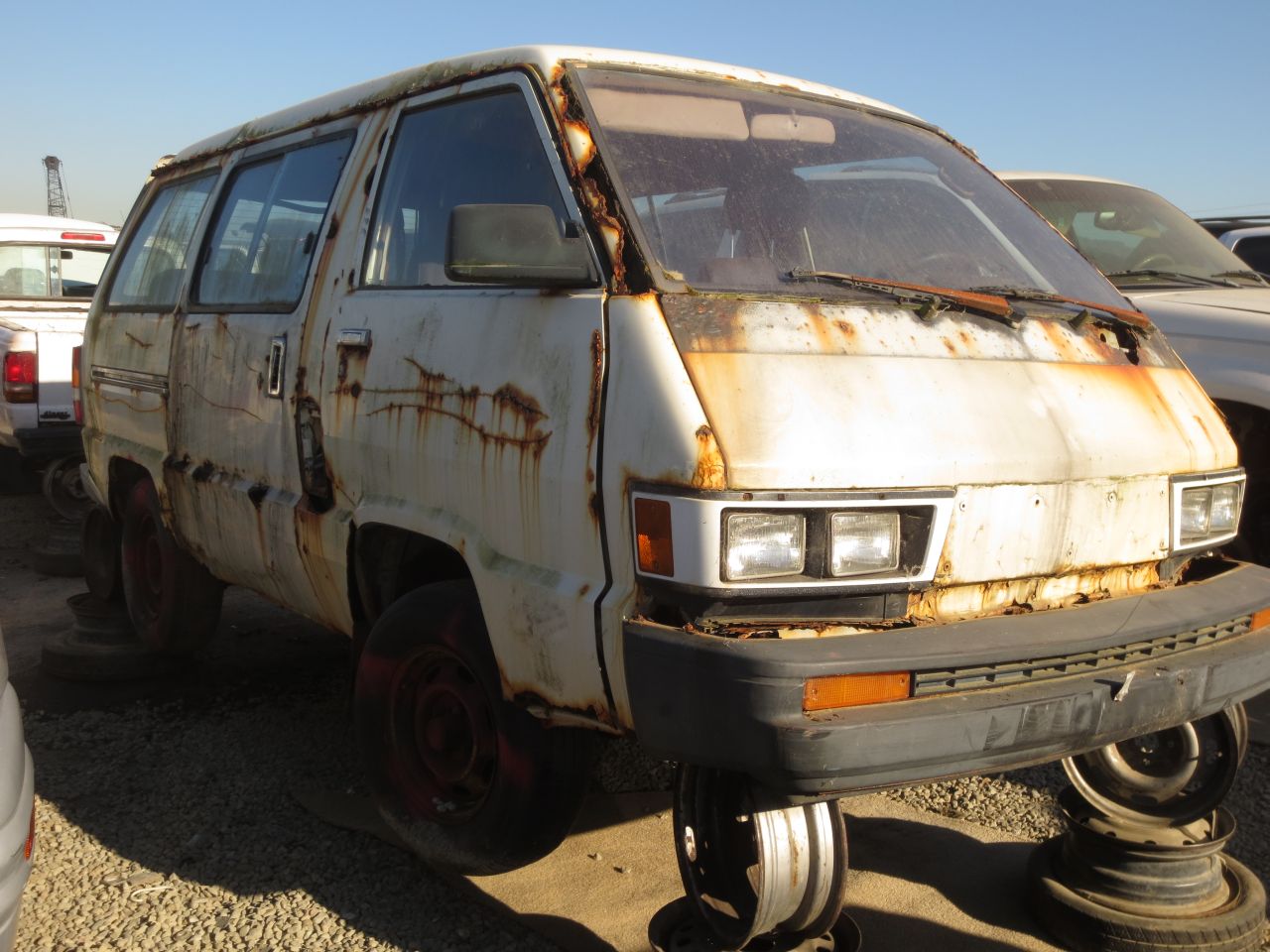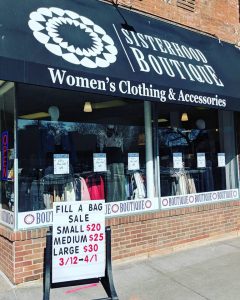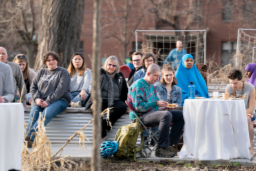
Gazing out the west-facing upper windows of the Hagfors Center on Augsburg’s campus, you can’t miss benches, paths, and raised beds of Augsburg’s community garden. While the garden on the edge of campus has been cultivated since 2008, when the plans for the Hagfors Center for Science, Business, and Religion got underway, there was a distinct opportunity to preserve and re-imagine this unique community garden space. With support from the Medtronic Community Foundation, design guidance from O2 Design, and community-based input, the garden was rebuilt to make the space more accessible, inclusive, and visible.
Throughout the design process for the new garden space, gardeners and Augsburg staff centered the enduring principles and goals for this vital community connection space: grow food, build relationships, and learn together.  The garden now has wider and defined pathways, clear plot boundaries, and a variety of raised and in-ground beds.
The garden now has wider and defined pathways, clear plot boundaries, and a variety of raised and in-ground beds.
The re-designed garden just finished its second season of production. With over sixty individual plots and communal growing space cultivated by residents of Cedar-Riverside and Augsburg staff, faculty, and students, the newly rebuilt garden is continuing to offer a place for learning and building community.
About half of the members of Augsburg’s community garden are neighbors in Cedar-Riverside and Seward (six have a view of the garden from their homes across the street!), and about half are Augsburg staff, faculty, and students. Student groups, such as Hmong Women Together and the Augsburg Indigenous Student Association, tend portions of the communal gardening areas, and about ten students from TRIO Summer Bridge spent time learning in the garden over the 2019 growing season.
Individual gardeners are not the only people to utilize the garden; this fall, several professors teaching classes focused on food and sustainability are also capitalizing on the presence of the garden. From a history of food class, to a course on environmental connections to food, a chemistry AugSem, and a science of food and cooking class: the garden has increasingly become a laboratory for classroom learning on wide-ranging subjects related to growing and consuming food. Other classes utilize the garden in less formal ways, perhaps holding a class outside by The Loveliest of Trees, or sending students out for discussion as they walk the garden paths.
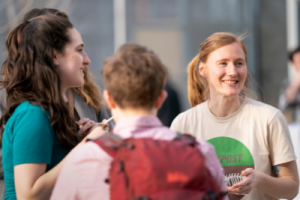
During the summer and fall of 2019, the garden began to utilize the Food Lab space in the Hagfors Center for potlucks and food preparation. Chief Sustainability Officer Allyson Green, who oversees the garden, remarked that the first session of gardeners gathering in the food lab over the summer was the highlight of the season; people got to know one another and shared cooking techniques and conversation as they made sambusas. This season also saw a student-led storytelling event in partnership with Mixed Blood Theater and food activist, LaDonna Redmond. As gardeners and others are living into the new space, opportunities for connecting and learning with and from each other are growing alongside the vegetables.
One challenge with the garden rebuild was impacted soil in the in-ground beds due to construction equipment. After the garden was initially built, gardeners were having a difficult time cultivating healthy root systems for their plants, requiring that all of the in-ground beds be dug up and the soil turned. Thankfully, dozens of students, several classes, and a few athletic teams answered the call, picking up shovels and making quick work of the beds that required turning.
When asked about how the garden fits into the overall sustainability commitments of Augsburg, Allyson noted that the garden is a visible demonstration of Augsburg’s commitment to caring for the place where Augsburg is located. By tending to our natural environment and building a place for community building, food access, and learning, the garden is an important aspect of Augsburg’s place-based and anchor institution work.
 Allyson also noted her hopes for the garden. With twenty-five people on the waiting list, she hopes that the garden can continue to be a vital place on-campus for learning and relationship building that contributes to the well-being of the whole community. She dreams that the garden might be a model for cooperation and learning that can spread to other areas of campus, and even to other communities!
Allyson also noted her hopes for the garden. With twenty-five people on the waiting list, she hopes that the garden can continue to be a vital place on-campus for learning and relationship building that contributes to the well-being of the whole community. She dreams that the garden might be a model for cooperation and learning that can spread to other areas of campus, and even to other communities!
As a space that requires the cooperation of dozens of people who all have different ideas about ways of growing food, habits of organization and storage, and different cultures, personalities, and life stories, the garden is a unique place for experimentation, building community amongst difference, and finding a middle ground. Here’s to a successful growing season and many more to come!

